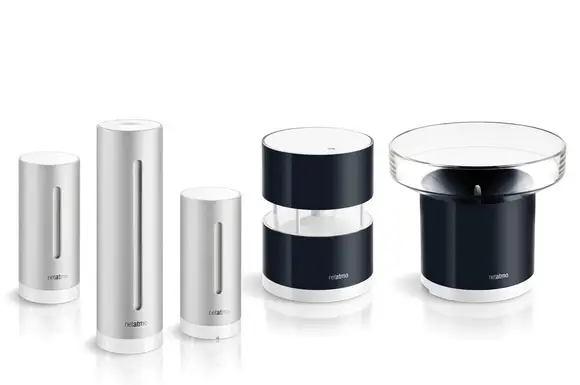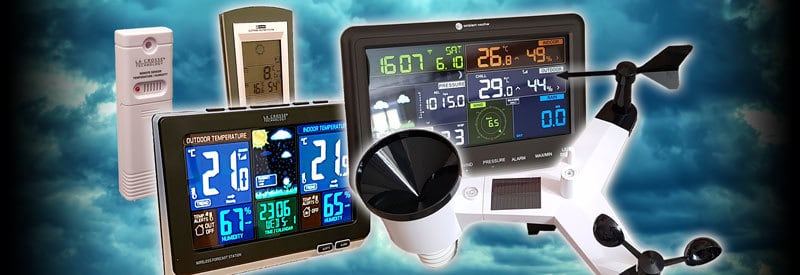Best home weather station: Every people has their own morning routine. Some of us go for a run, some of us get the kids ready for school, some of us just want to know if everything will be okay during our rush hour commute. Weather can get in the way of any of these plans.
Best home weather station platform
Ambient Weather does the best job of designing and building a home weather station that can be integrated into a smart home. The WS-5000 impressed us with its easy setup, accurate reporting, and support for Amazon Alexa, Google Assistant, and IFTTT. We also like its application and its color console. That’s a steep price increase over Ambient Weather’s WS-2902, which is still available, but you’ll find it’s worth the investment.
How we tested
We test weather stations over a period of at least a month to make sure that we get as wide a variety of weather conditions. Weather conditions can vary greatly over just a few miles, so with temperature we consider readings within plus or minus two degrees and all other measurements within the 5% tolerance of the NWS station to be accurate.
We also assess each system’s ability to connect and influence smart home systems. What platforms are supported? Can you use voice commands? Since instruments are exposed to the elements 24/7, this is a very important factor to consider.
What to look for when buying
At a minimum, a basic weather station should report temperature and humidity, inside and outside your home, as well as barometric pressure outside your home. A top-of-the-line model should offer all of the above, plus other specialized metrics like UV index.

Spending a lot of money does not necessarily guarantee that you will get a great product. However, we have yet to find a cheap weather station that offers real value. Most budget stations available at discount chains and hardware stores are inaccurate.
When the temperature is usually accurate to within about a degree, humidity is poorly measured and readings can be 10-15% lower than actual. Mid-range and high-end weather stations are usually much better, and in my experience never go above 5% most of the time.
Measurements of wind and rain are very useful when you have activities affected by this type of weather. It’s good to have premium stations if you can afford them; these are usually the most accurate, but unless you need special measurements (UV, soil moisture, etc.), don’t spend the money.
Here are some other advantages you might look for in a weather station:
Accuracy – By far the most important, accuracy is also the hardest to measure. In this, we suggest that you consult the technical sheets and then choose stations with low margins of error. Also, check user reviews for real-world testing.
Battery or solar power?
So your instruments will be battery or solar-powered. Avoid stations that rely primarily on solar power. Battery or solar-powered units are the best options; you may need to change the batteries once a year.
Internet connectivity:
If your station can connect to the internet, not only will you be able to access it while you’re away, usually through a special app or website, but you’ll also be able to share your data with the world through services like WeatherUnderground. Meteorologists may need your data, especially if you’re in a place where their weather stations aren’t!
Smart home support
Personal weather stations can make your smart home even smarter. If you already have a home system connected, find a weather station compatible with your setup. Some stations now support automation services like IFTTT, so you can turn on your heating when the temperature drops too low, or your air conditioner if it gets too hot. Others are compatible with Amazon Alexa and Google Assistant, allowing you to request highly localized weather reports.
Expandability
Your weather station may work for you now, but your needs may change later. Instead of going for all the bells and whistles upfront, save some money and buy a mid-range product that can be expanded with different new sensors in the future. That way you’ll never get over it.
Durability
These elements can be harsh and your sensors will be there 24/7. Cheap stations are made of poor-quality plastics. Look for a well-built station and stay away from “all in one” units where all the sensors are in one box. The sensors are the biggest part of the cost, and if one fails, you’ll have to replace all of them, even if the others work fine.
A brief note on sensor placement
This is where my weather side comes out. Choose carefully where you will place your instruments. The temperature should be placed in a grassy area at eye level and out of direct rain or snowfall. Should not place near or on concrete, asphalt, or other potential heat sinks. For the rain gauge, the level at which you place it is not that important.
The important thing is that it is not placed so low that splashing on the ground causes abnormally high readings, or near tall obstructions that can block rain in windy conditions. The NWS generally recommends placing the rain gauge as far away from obstacles as it is high up. It’s hard to do, so just put it in as open a place as possible. The anemometer (the fanciful name for anemometer) is the most difficult instrument to set up. Most people are surprised to find that the wind speed readings they see on television are taken at a height of 33 feet above the ground. This isn’t practical for most of us, but try to place it 10 feet above any nearby obstacles if you can. You will also need a compass nearby; you will need it to point the weather vane in the right direction. The station’s installation instructions will tell you how to align it correctly.
